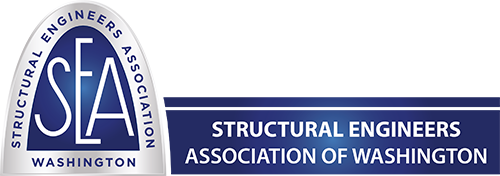"Improving the Built Environment for Post-Earthquake Reoccupancy & Functional Recovery Time"
Cost: SEAW Members and Students - FREE! | Non-Members - $15
After registering, you will receive a confirmation email containing information about joining the webinar.
Presentation:
During a strong earthquake, buildings that meet current codes and standards may sustain damage that significantly hinders the restoration of building functionality. Lifeline infrastructure systems can also be damaged and fail to provide critical services. The damage and its consequences hinder community recovery. The public finds significant disruption and delay to building and infrastructure use unacceptable. Buildings and lifelines can be designed so that they are better able to serve their function or regain functionality within an acceptable time after an earthquake. Doing so will require shifts in design philosophy from safety-based objectives to recovery-based objectives across multiple aspects of practice. The 2018 Congressional reauthorization of the National Earthquake Hazards Reduction Program (NEHRP), P.L. 115-307, required the National Institute of Standards and Technology (NIST) and the Federal Emergency Management Agency (FEMA) to work with experts to address improving post-earthquake functional recovery. The speaker will discuss NIST and FEMA actions to fulfill the Congressional mandate as well as key findings from the report to Congress concerning options for improving the functional recovery of the built environment. He will also discuss some of the ongoing projects at NIST concerning functional recovery.
Presenter: Siamak Sattar, Ph.D.
Dr. Siamak Sattar is a Research Structural Engineer and the Associate Program Manager in the Earthquake Engineering Group at the National Institute of Standards and Technology (NIST). His research areas include seismic performance assessment of concrete and masonry buildings, functional recovery, uncertainty quantification, and performance-based seismic design of reinforced concrete structures. Prior to joining NIST, Dr. Sattar was a post-doctoral research associate at the University of Colorado-Boulder where he pursued his Masters and Ph.D. In addition, he worked as a practicing structural engineer specializing in the design of concrete and steel structures for four years. Dr. Sattar is involved in development of codes and standards and is a voting member of the ACI-369 committee, Seismic Repair and Rehabilitation, and the ACI 374 committee, Performance-based Seismic Design of Reinforced Concrete Structures. He also Chairs the ACI-374A, Functional Recovery, and ACI-369C, Reinforced Concrete Frames, subcommittees. He is honored to be the recipient of a 2020 EERI Housner Fellowship.



